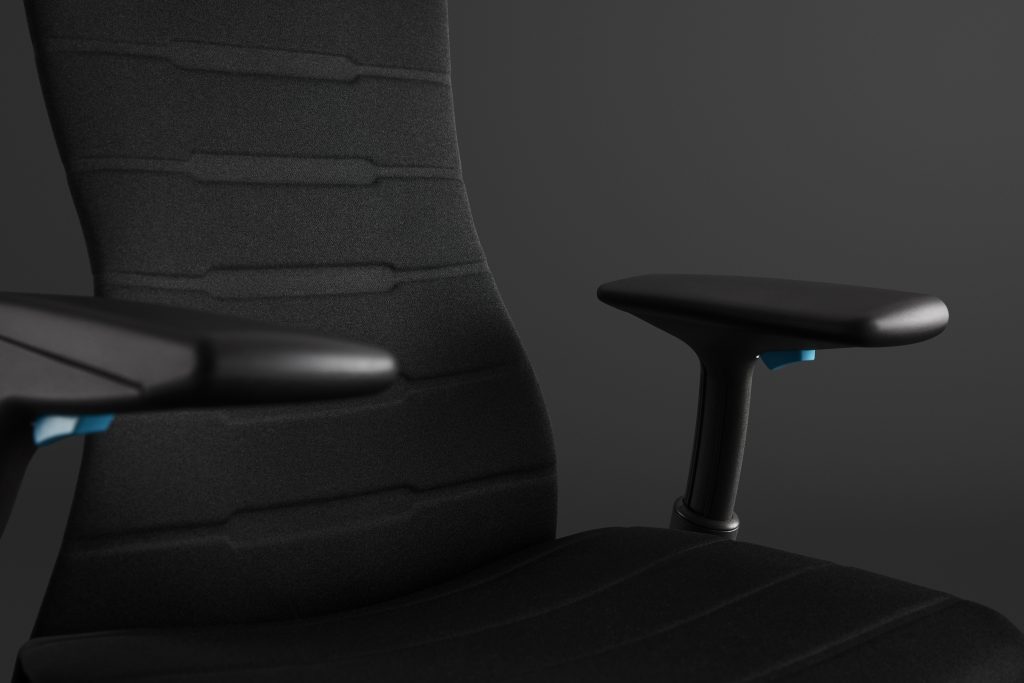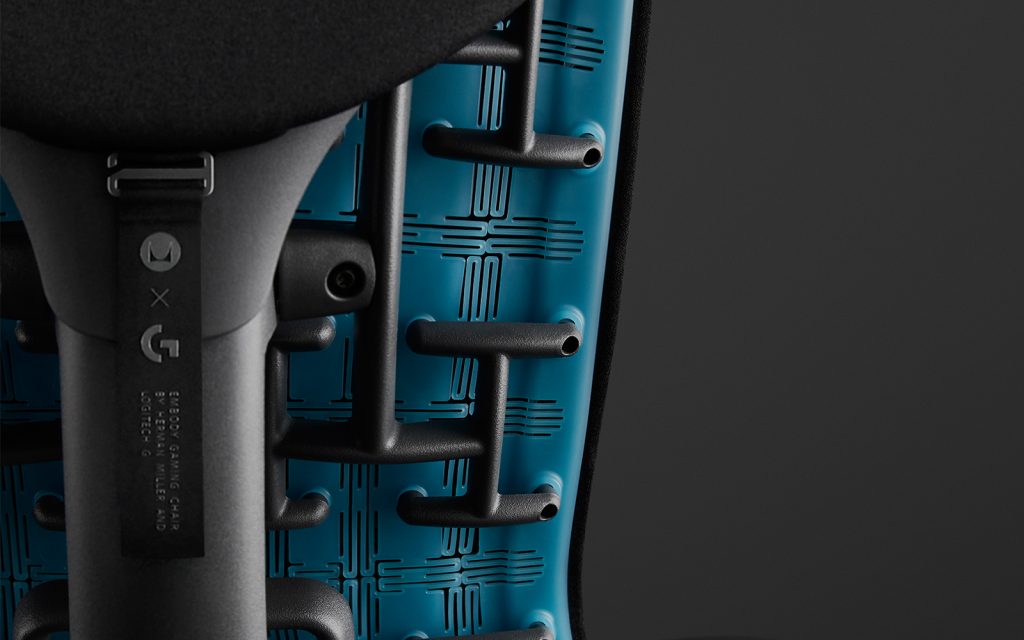Logitech + Herman Miller’s Performance-Enhancing Embody Gaming Chair
Seven points of calibration cater to the modern gamer’s needs

Gone are the days when gaming was considered a basement hobby; now it’s a professional sport with multi-million-dollar prizes, sprawling endorsement deals, and dedicated technology, apparel and accessories. From sneakers to displays and plenty of mouses, keyboards and controllers, the race to outfit this ever-growing category is gaining momentum. As such, Herman Miller—the 110-year-old producer of home and office furniture and equipment—partnered with Logitech to produce a suite of elevated gaming-focused furniture. The launch begins with the tech-forward Embody Gaming Chair, an evolution of Herman Miller’s beloved office chair that’s made from 42% recycled materials and is 95% recyclable when discarded.

“When we started talking to Herman Miller,” Ben Yu (head of marketing for Logitech’s gaming arm, Logitech G Series) says, “they were using our same laws and concepts of wanting to use technology to solve problems, and putting science and engineering first and foremost in terms of design. We started identifying problems within the gaming space and it made sense for us to partner together both from a value perspective and from the need perspective. Our mission is to combine the best of both worlds—Herman Miller’s understanding of seating and ergonomics and our [Logitech’s] understanding and expertise in gaming—to bring the next generation of high-performance gaming furniture.”

High-performance gaming furniture tests the average consumer’s, and even casual gamer’s, imagination. But, the collaborative team of Herman Miller designers, Logitech engineers and video game experts formulated a sports science-like approach to posture, performance and prolonged support. Logitech and Herman Miller furthered the decades of research and development that went into the standard Embody Chair and applied it to the habits and demands of professional gamers: how spinal alignment contributes to split-second reactions, how blood-flow enhances your decision-making abilities and beyond. The two parties also identified flaws in the Esports world’s current designs. Many base their chairs on a “race car” style, meaning a gamer is seated back with their legs jutting forward and their gaze up, as if they were looking a quarter mile ahead. But Herman Miller’s gaming lead, Jon Campbell, explains that a gamer should actually be upright with their gaze angled down.

“We’re actually looking at the video game player as a traditional athlete. You have to think about where their whole body is positioned,” he says. To cater to the gamer’s entire body and emphasize flow, they apply a longstanding design theory developed by the furniture manufacturer. “The anatomical loop is a term that has been coined and trademarked by Herman Miller, and we’ve been developing this theory for five to 10 years now and plan to continue to develop it in the future. It’s based on the kinetic chain theory. If familiar with traditional sports, it’s this idea that proper alignment in your body can generate power. When the body is not aligned in the way that it should be, you lose a ton of power and your body is actually put in a weak position.”

Herman Miller’s anatomical loop ensures that gamers are using their positioning as an advantage. Like motions in other sports, which rely on correct positioning of the feet through the head, video game players are quicker and more accurate in first-person shooter games or even strategy and sports games if their body is aligned ideally. While testing a chair of our own, we did find it easier to focus when we were properly cradled, and relaxing between tasks was made easy by unlocking the stabilizer and leaning back.
“Your brain controls your body, but your brain isn’t in your head,” Campbell explains. “It’s a misconception most people have—we forget that our brain’s connected to our spinal cord and our spinal cord runs all the way down into our pelvic bone and is fused into our pelvis. Your brain actually ends in your butt, and you have to actually think about how to properly support your spine and hips so that you can get the proper function and performance out of your brain.”

This research manifests as a comprehensive system of adjustable levers, coils and copper-infused foam. The chair boasts seven points of calibration, 150 “pixels” on the back that reduce pressure and encourage “micro-movements,” and unique technologies that adjust to a gamer’s posture and natural spine shape. Whether you’re pushing the arms in or out, bringing the chair’s back in to hug your spine and encourage better posture or locking the chair in at a slight angle, the seemingly endless number of configurations provides flexibility and adaptability. As a gamer learns the ins and outs of their new chair, they can make changes depending on the game or keep the chair in the ideal setting more permanently.

The ability to adjust the chair for maximum comfortability isn’t a new concept, though—especially for Herman Miller, a brand that’s incorporated customization in their designs, to varying degrees, since their inception.
“We decided that we have to start with the highest performing chair within our portfolio and focus heavily on setting and redefining what performance actually means for gaming, and no other chair is better to do that than Embody,” Campbell says. “When Embody was first designed, it was designed in partnership with over 30 PhDs and physicians. We took a lot of our findings from that research and looked at posture and at the way that a gamer sat and how they focus on the screen. We were actually able to modify Embody in a way to better suit gamers’ needs, to continue to push technology, and the performance we get out of Embody, even further and have it be more authentic for the gaming market. Now it aligns your body properly, improves blood-flow, and maximizes oxygenation in your body.”

These developments are especially important given the average age of gamers is 21 and their career span is usually a “year to two years max,” Yu explains. Herman Miller’s gaming teams took time to visit the hubs of several Logitech-sponsored Esports teams, watching as players’ made adjustments to their positioning, gaze and angle mid-match.

“I think of track and field as the best analogy,” Campbell says, referencing the fact that one-size-fits-all chairs and accessories are contributing to the shortness of professional players’ careers. “Imagine you were to go to a track and field meet and require every single runner to wear a size nine shoe. And then you asked them to go perform at their highest level. That doesn’t make any sense, and I think that’s where we’re at today with gaming. But, we have a lot of education and we have to shift our thinking about the chair to think of it as performance gear. I see a time in the future where you walk onto the stage with your mouse and keyboard; you’re going to walk on stage with your chair, like, ‘This is mine’—because it is performance gear specifically for you.”
The Herman Miller x Logitech G Embody Chair is available today, 22 July, for $1,495. It is shipped fully assembled and rolls out the box ready to be configured.
Images courtesy of Herman Miller / Logitech G












